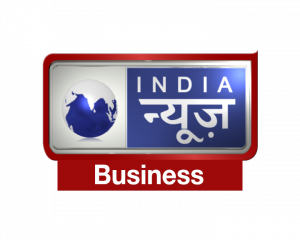The Interim Budget will be presented by the Union Minister of Finance on February 1. As the current NDA government’s term expires in May, this budget will not be the typical one—that is, the full budget. While we excitedly await the budget, let’s look at some keywords that will make it easier for us to understand.
Union Budget
Article 112 of the Indian Constitution mentions the term “annual financial statement.” This statement is the main budget document. It is an estimate of the government’s revenue and expenditure at the end of a fiscal year, which runs from April 1 to March 31.
A Union Budget is the most complete report on the Government’s finances, consolidating earnings from all sources and outlays for all activities. Budgeted estimates are estimates of the government’s accounts for the following fiscal year.
Interim Budget
Like the Union Budget, it is not mentioned in the Constitution. According to the Election Commission’s Code of Conduct, the ruling government cannot include any substantial schemes in the interim budget since they may influence voters. The government in power cannot produce the economic survey and the interim budget.
Vote on Account
Vote on Account refers to an advance payment made to the government so that it can continue operating before the grant requests are voted on and the Appropriations Bill and Finance Bill are passed. This makes it possible for the government to cover its costs temporarily or until a complete budget is approved. A vote-on-account is typically handled as a formal affair and is approved by the Lok Sabha without debate.
Gross Domestic Product (GDP)
A nation’s gross domestic product (GDP) is the total monetary or market worth of all completed products and services produced inside its borders during a certain period of time. It serves as a thorough assessment of a nation’s economic health since it is a wide indicator of total domestic production. While the GDP is normally computed annually, it can also occasionally be computed quarterly.
Net Domestic Product (NDP)
The total worth of all goods and services generated inside a nation’s borders is known as its net domestic product. It is regarded as a crucial sign of a nation’s economic expansion. The depreciation of the country’s capital assets, such as buildings, machinery, and automobiles, is subtracted from the GDP to arrive at the net domestic product (NDP).
Capital Budget
A capital budget is an official declaration of the government’s projected capital outlays and revenues. Non-recurring capital items are covered under the capital budget.
It has two components:
- Government receipts that increase liabilities or decrease financial assets are known as capital receipts. Examples of this include disinvestment, market borrowing, and loan recovery.
- Government spending on capital projects, such as asset creation or liability reduction for railways, loans to the state, and highway creation, is known as capital expenditure.
Revenue Budget
The government’s collections and outlays for revenue make up the revenue budget.
The government’s profits and interest on its investments, payments for services rendered, and other income are all considered revenue receipts.
The expenditures incurred by government agencies for their everyday operations, such as interest paid on debt, subsidies, etc., are all included in revenue expenditure. Revenue expenditures also include any outlay of funds that does not result in the creation of an asset for the government.
Fiscal Policy
Everything pertaining to government revenue and expenditure is covered by fiscal policy. Fiscal policy initiatives address the most significant economic sectors, ranging from taxation to budgeting. There are three components to fiscal policy in India—government revenue, government outlays, and national debt. The Ministry of Finance, with support from NITI Aayog, sets fiscal policy.
Monetary Policy
In order to achieve the ultimate goal of economic policy, monetary policy refers to the employment of monetary tools under the jurisdiction of the Reserve Bank of India to regulate magnitudes like interest rates, money supply, and the availability of credit.
Fiscal Deficit
Fiscal refers to the money received by the government. Simply put, a fiscal deficit is the difference between the government’s non-borrowed revenue and its outlays. When the government’s expenditures surpass its non-borrowed receipts, the difference between the total expenditures and total non-borrowed receipts is known as the fiscal deficit. It is typically expressed as a percentage of the GDP of the nation.
Consolidated Fund
The Indian Consolidated Fund was established under Article 266.
All of the money that the central government receives in the form of direct and indirect taxes, borrowings, loan receipts, and loan repayments is attributed to the Consolidated Fund of India. Except for extraordinary expenses, which are paid from the Public Account of India or the Contingency Fund, all central government expenses are paid from this fund—but only after receiving parliamentary permission.
Contingency Fund
Article 267 establishes the Indian contingency fund.
The President of India may draw funds from the Contingency Fund of India in the event of an emergency to cover urgent, unanticipated expenses. Later on, the parliament will need to give its approval to the government.
Public Account
The government serves as a banker in several different transactions, such as provident funds and small savings accounts. This money must be given back to the depositors because they are not government property. A public account oversees the fund transfers in these situations.


